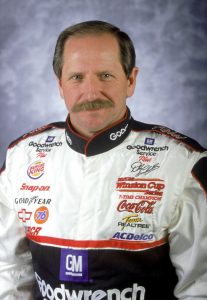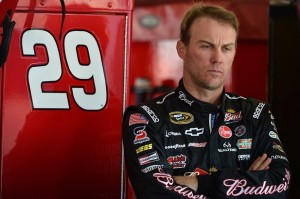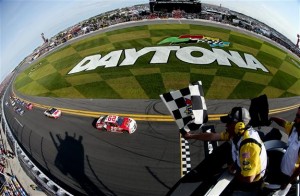
Photo Credit: Noel Lanier
Richard Childress cut his teeth as a driver in NASCAR, but it’s his success as a team owner that earned him a spot in the 2017 Hall of Fame Class.
Childress’ career in NASCAR began in 1969 at Talladega Superspeedway when a number of drivers and teams boycotted the race at Talladega due to safety concerns. Knowing a shorter and weaker field would be in attendance that weekend, Childress put a car together and made his debut in his No.13 Chevrolet. While Richard Brickhouse scored the win and Childress finished back in 23rd, it was this race that sparked the legendary career of Childress.
Over the next several years, Childress would continue to run both part and full-time. After years of seeing minimal success, Childress knew it was time to make a change. During the late stages of 1981, Childress stepped out of the car in favor of a young, brash driver. That driver was Dale Earnhardt. Earnhardt ran the final 11 races of the season, scoring six top-10 finishes. He didn’t return to the team the next season, but it was the beginning of a relationship that would reunite just a few years later.
Two years later, Richard Childress Racing finally rolled into victory lane with driver Ricky Rudd at Riverside International Raceway. Rudd would score another one later in the year, cementing the future success of RCR.
Earnhardt returned to the team in 1984 when he won two races with the organization. When Earnhardt returned, he returned for good. He stayed with the team until his untimely death in 2001.

In 1986, Earnhardt brought RCR its first premier series championship, and followed it up with another title the following year. Earnhardt would win four more championships in the 1990s during his time with RCR, and the 1998 Daytona 500.
2001 was a turning point for everyone in NASCAR, but Richard Childress Racing was hit the hardest. Earnhardt was killed on the final lap of the 2001 Daytona 500 when he made contact with another car. The No.3 car spun and hit the outside retaining wall before sliding down into the infield. The impact, which was made worse by the absence of the head and neck support (HANS) device, ended his life, and nearly ended Richard Childress Racing.
After Earnhardt’s death, Childress found it hard to keep the motivation of the race team going, but when a

nother young rookie stepped up in Earnhardt’s place, the motivation reappeared. Kevin Harvick, who had been driving for the team in the Busch (now XFINITY) Series, stepped into the renumbered No.29 car. Within just three starts, Harvick made his way into victory lane at Atlanta Motor Speedway. Harvick would win another race later in the season, while his teammate Robby Gordon won the season finale at New Hampshire Motor Speedway.
 Over the next dozen years, Harvick would win 20 more races for RCR including a Daytona 500 in 2007 and a Brickyard 400 win before moving onto Stewart-Haas Racing in 2014. Other drivers like Jeff Burton and Clint Bowyer would win races for RCR and move onto other things later.
Over the next dozen years, Harvick would win 20 more races for RCR including a Daytona 500 in 2007 and a Brickyard 400 win before moving onto Stewart-Haas Racing in 2014. Other drivers like Jeff Burton and Clint Bowyer would win races for RCR and move onto other things later.
Beyond the Monster Energy NASCAR Cup Series and RCR’s 105 wins in the premier series, the team would win more than 100 races between the XFINITY and Camping World Truck Series, four XFINITY Series championships with Harvick, Bowyer and Austin Dillon and two Truck Series championships with Mike Skinner and Dillon.
Much like fellow 2017 inductee Rick Hendrick, Childress’ career is by no means over. With the team in a rebuilding period, a Hall of Fame berth for Childress might be just what the team needs to get that winning motivation back flowing.




